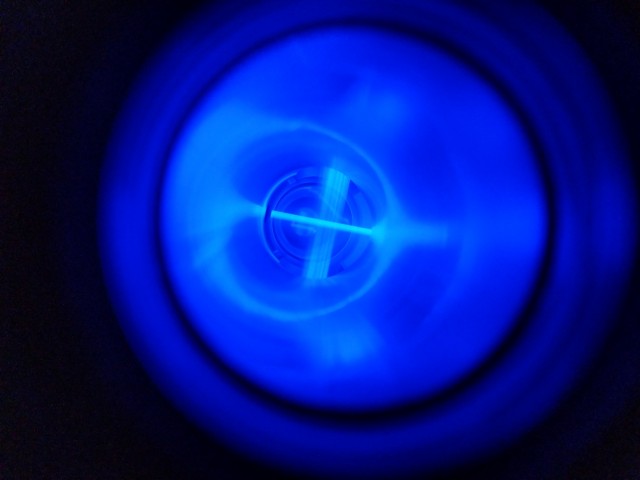
BECs: An Origin Story
Description
We heat strontium metal to 1100 degrees F to create a beam of strontium gas which will eventually be cooled to almost absolute zero, creating a Bose-Einstein condensate we use to study quantum properties of materials. Shining blue laser light on the beam in two dimensions allows us to see the atoms!
Bose Einstein condensates, a type of cold quantum matter, can be placed in a crystal of laser light to simulate the behavior of electrons in solids, allowing us to learn more about material properties. To create BECs, we need to cool some kind of metal- in our lab, strontium- down to nanoKelvin temperature regimes. To do this, we place strontium metal in an ultra-high vacuum and sublimate it at 873 Kelvin to create a gas. We then use a technique called Doppler cooling, using laser light and the atoms' velocity, to excite electrons in the atoms by absorbing and emitting blue light. The blue light emitted from the atoms allows us to observe a bright beam with our eyes. This laser cooling technique is so powerful that our atoms go from 873 Kelvin to a milliKelvin in a fraction of a second!










